Tips for maintaining a JCB Fastrac 2170
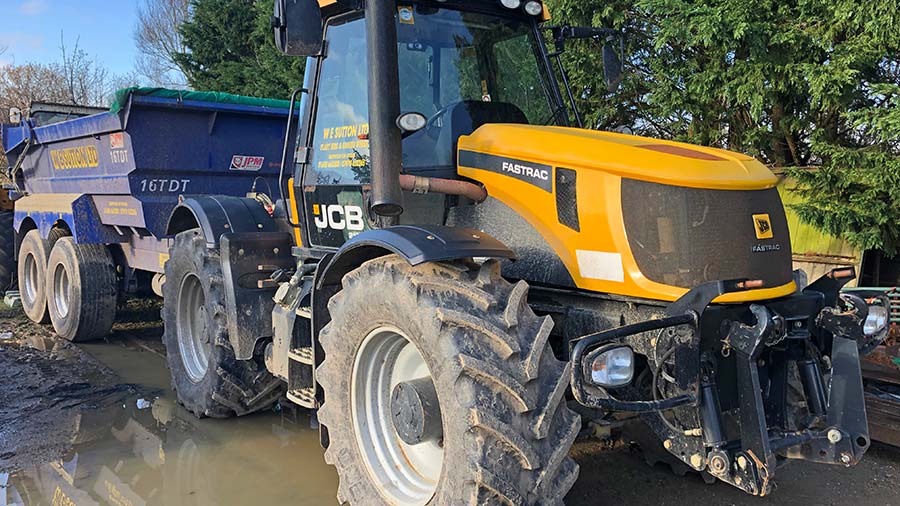 JCB Fastrac 2170 © James Andrews
JCB Fastrac 2170 © James Andrews Hip-busting dry clutches, a tanker-like turning circle and shonky wiring are just a few of the common grumbles levelled at early JCB Fastrac models.
The list of ailments has been enough to ward off many a potential buyer, but the firm’s efforts to iron out the creases meant that later models were far more user-friendly and dependable.
Unsurprisingly, savvy buyers have cottoned on to this fact and there’s now a healthy demand for certain tractors built in the mid- to late 2000s.
One such range is the last-generation 2000-series, which was introduced in 2007 and included just two models – the 2155 and the 2170. These were identical, save for a tweak to the ECU that upped the power output from 160hp to 171hp.
See also: Tips for maintaining a Fendt 700-series tractor
Key selling points are the virtually indestructible 6.7-litre Cummins QSB engine, reliable Smoothshift wet clutch, 60kph top speed, ABS brakes, and the option of four-wheel steering.
The tractors had a seven-year production run and were superseded by the 4000 series, which brought in an Agco/Sisu engine, Fendt Vario transmission and a considerably higher price tag.
If well maintained, the 2000s can clock up high hours with relatively little outlay. However, they need to be looked after and there are plenty of abused examples around that will give trouble and cost money to put right.
With the help of Malcolm Davies, joint director at Warwickshire JCB dealer LQG Agri, we take a look at the most important areas to watch out for when running or buying one of these machines.
The tractor featured is a well-maintained 2013 model 2170 with 5,100-hours and 63,000 miles on the clock, which belongs to contractor WE Sutton.
Many of the pointers mentioned here will apply to the earlier 2140s that were built from 2004 to 2006. These tractors had a smaller 5.9-litres Cummins six-cylinder engine developing 142hp, a slightly shorter chassis and top speed was limited to 50kph.
Tyres

JCB Fastrac tyres © James Andrews
The type and condition of tyres fitted to a Fastrac is one of the biggest giveaways to the sort of past it’s had.
Wear should be fairly even, so if the lugs are filed off on the corners it shows that the tractor has been hauled into bends and roundabouts at high speed.
This aggressive driving puts strain on steering and suspension bushes and gives the drivetrain a battering. For those looking to buy a tractor with this sort of tyre wear, it’s worth taking a very close look at the steering and suspension components mentioned below.
Also, check that the tractor has the proper speed-rated tyres, which should have a D or E marking. Standard tyres are about 15% cheaper, but they run the risk of overheating and could result in legal problems if the tractor is involved in an accident.
Antiroll bar bushes
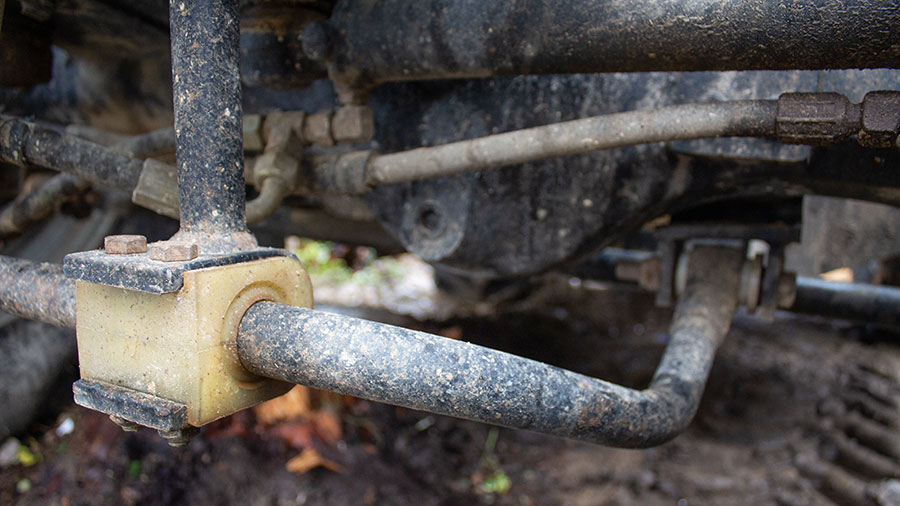
Antiroll bar © James Andrews
Antiroll bar bushes will wear over time and this is exacerbated on tractors that are driven hard. Get under the front and wobble the bar to check for play.
Worn bushes are relatively simple to replace and cost about £3 each, so a careful owner should have kept on top of these. If run for long periods with shot bushes, the antiroll bar could also need replacing – these come in at about £194.
A test drive will reveal a lot about the state of the front axle and steering. There shouldn’t be any juddering, pulling to one side or play in the wheel. If all is not well, it’s also worth taking a look at the condition of the steering arms and getting the tracking checked.
Springs
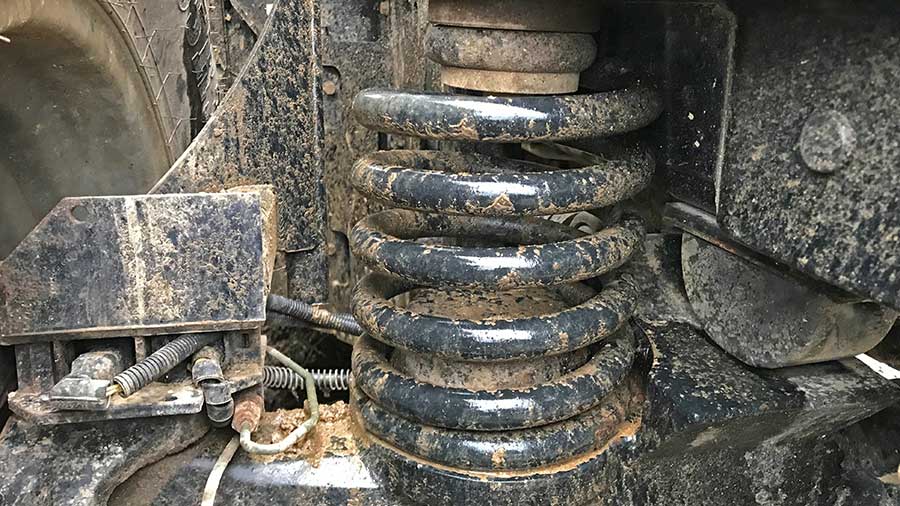
Spring © James Andrews
If the tractor sits lop-sided at the front, one of the springs could have lost its bounce. This is usually caused by the tractor sitting for long periods of time, but it can also be down to the way it’s been driven.
The axle bump stops will help show if this is the case – they should be a neat semi-circular shape with few signs of compression or damage. If they’re bashed, broken or missing altogether, it means the tractor has probably been driven fast on rough ground.
Replacement springs cost about £230 and they are simple to fit once the front of the tractor has been jacked up.
Rear hydro-pneumatic suspension
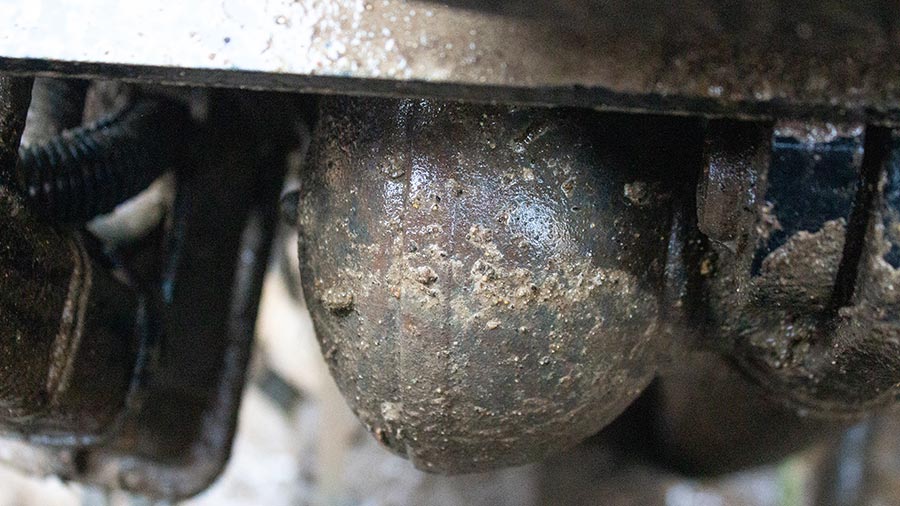
Accumulator © James Andrews
If the tractor is sitting unevenly at the rear, it could be that the levelling rods for the hydro-pneumatic suspension need adjusting.
These are positioned roughly in line with the front of the rear wheels and they can be wound up or down to get the tractor level.
However, if the suspension won’t lift properly on one side or it rides rock hard, it could be that one of the accumulators is on the blink.
These are positioned next to the hydro-pneumatic dampers and replacements cost about £97. They’re relatively straightforward to fit.
Propshafts
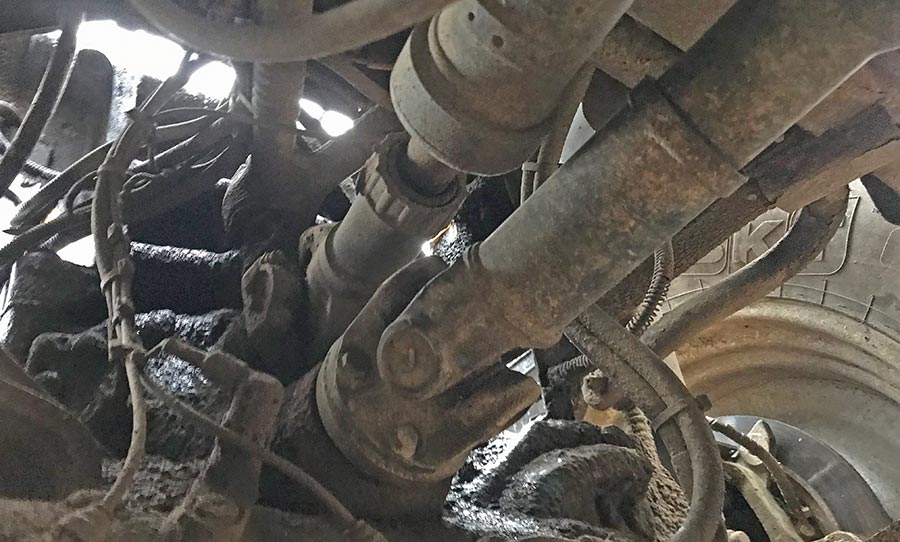
Propshafts © James Andrews
Fastrac propshafts need regular greasing and inspection to make sure there aren’t any failures.
Grovelling underneath to do this is far from fun, but it’s one of the most important maintenance jobs to carry out. If a universal joint does give out, the propshaft can flail around and cause expensive damage to other components.
There are front and rear axle props to grease, as well as the one for the rear pto – front ptos are very rare on 2155s and 2170s.
If buying a tractor, definitely crawl underneath, check for signs that grease has been applied regularly and wobble the props to check for play. Replacement universal joint kits are £76 each.
Steering angle sensors
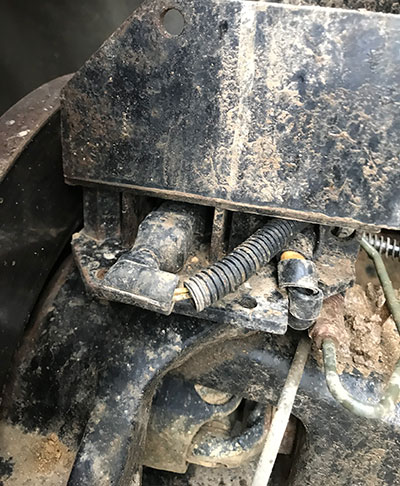
Steering sensor © James Andrews
The optional Quadtronic four-wheel steering system is a sought-after option on the 2000 series, as it dramatically improves the turning circle and makes the tractor far more manoeuvrable.
It also allows the rear axle to track the front, reducing crop damage when the tractor is teamed with a demount sprayer.
The downside is that the steering angle sensors can give up. If the tractor sticks in one steering mode or gets lost somewhere between the two, this could be the problem.
Each axle has its own sensor fitted to the top of one of the slew pots, and the problems occur when they come into contact with corrosive materials such as road salt and fertiliser. They cost £129 each and they’re pretty simple to replace.
If new sensors don’t solve the problem, damaged wiring could be to blame, which can be more difficult to find and repair – see below.
Wiring
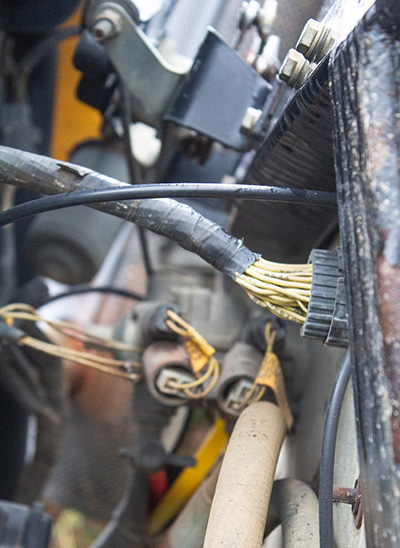
© James Andrews
Wiring isn’t one of the Fastrac’s strong suits and there are a number of places where the cables can trap moisture and corrode.
The fun starts when it comes to pinpointing the problem, as almost all wiring is the same colour. Wires are numbered, but this writing wears off over time, making it challenging to work out which wire does what.
Patience and a good multi-meter are therefore essential when going in search of a fault.
Brakes
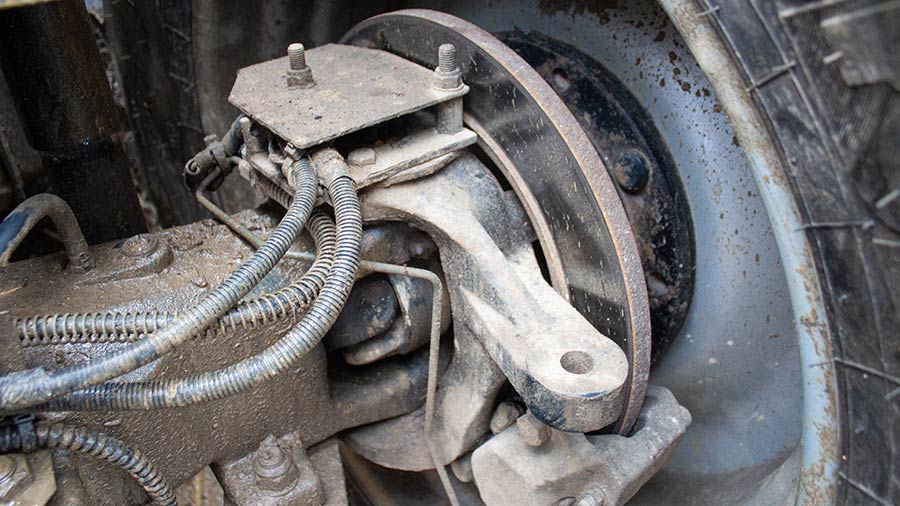
Brake disc © James Andrews
Both the 2155 and the 2170 are fitted with external disc brakes on all corners and they come with ABS as standard.
They’re essentially beefed-up versions of what you’d find on a car, which makes them easy to inspect and simple to maintain.
Pad life varies massively according to the way the tractor is driven and the environment it’s used in, but in normal conditions they should be able to last the 500hrs between service intervals.
Discs can keep going for thousands of hours, provided the pads are changed in good time and they’re not left covered in fertiliser or scored by stones and grit. Replacement pads cost £118 and discs are £150.
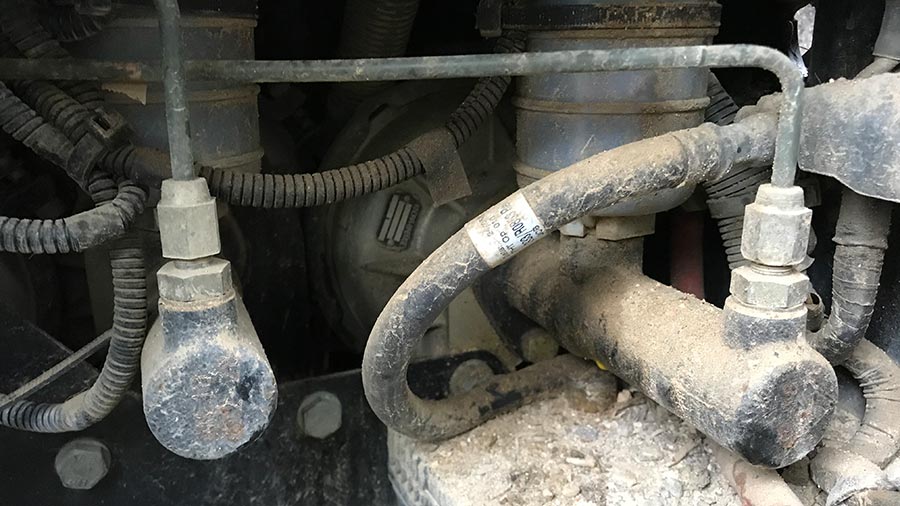
Master cylinders © James Andrews
The braking system has air-over-hydraulic actuation and there are separate air tanks and cylinders for the front, rear and trailer braking circuits.
To prevent corrosion, condensation should be drained from the air tanks regularly, via the hand-operated valves on the underside. It’s also important to inspect the master cylinders for leaks – these can be found under the right-hand steps, along with the battery and the release handle for the bonnet.
It’s worth noting that these tractors have a 12V trailer ABS supply socket that works independently of the tractor’s system.
Handbrake
The handbrake on the 2000-series is a dry disc on the rear propshaft, which is applied automatically by a spring and released by air pressure.
It’s important to keep on top of the maintenance and adjustment, otherwise it will drag and wear out prematurely.
The most important job is to grease the linkage regularly and listen out for a rattle during driving. This indicates that it’s catching and needs some attention.
Engine
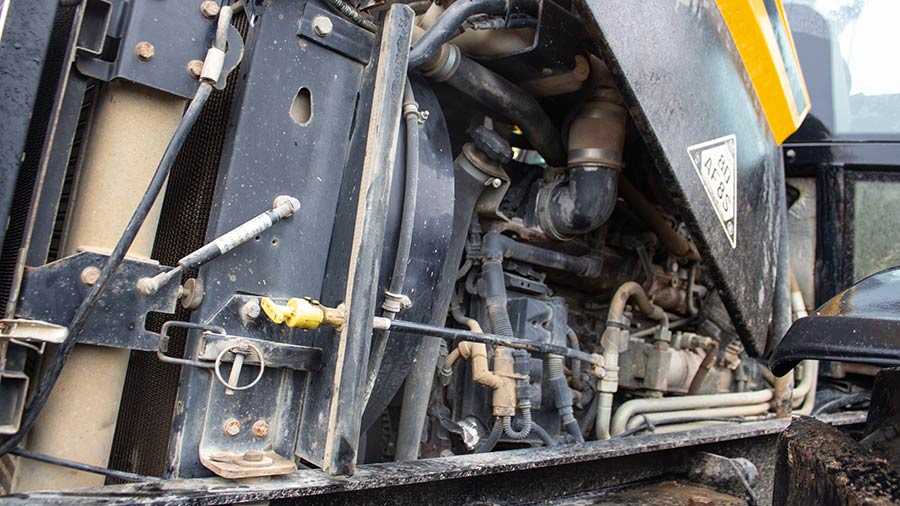
The engine © James Andrews
The 2170 and 2155 are fitted with a 6.7-litre Cummins QSB engine that’s virtually indestructible if properly serviced.
It’s a simple powerplant for a tractor of this age, featuring four valves per cylinder and a straightforward fixed-geometry turbo, with the only relatively modern addition being a common-rail injection system.
Tuning chips are one of the main things keep an eye out for. These tractors can be used to tow some pretty weighty trailers and with 171hp under the bonnet (160hp in the 2155), operators have to work the gears hard when they hit the hills.
As a result, many have been chipped to about 200hp and some will be putting out the best part of 240hp. The engine is strong enough to take a bit of extra power, but if you’re looking at buying a chipped tractor, take extra care to examine the condition of the propshafts and running gear.
Service intervals are 500 hours and the engine should be run on 15W-40 oil.
Clutch
The Smoothshift clutch is a massive improvement over the dry clutch fitted in earlier Fastracs, both in terms of operation and reliability.
If used considerately, it should be good for 10,000 to 12,000 hours. Replacement could be on the cards if buying a high-hour or abused machine and it’s a relatively big job that involves lifting the cab.
The cost of having this done at a dealer is about £1,500.
Transmission
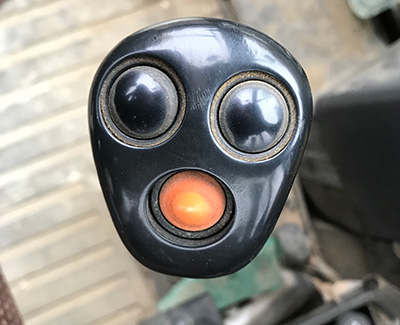
Gearstick © James Andrews
Both the 2155 and 2170 run an Eaton Fuller six-speed transmission with three splitters, which is attached to a three-speed JCB range box. This gives a total of 54 forward gears and 18 in reverse.
Range changes are performed on the left-hand shuttle lever while at a standstill and the six-speeds are shifted by dipping the clutch and moving the floor-mounted gearstick. As for the splitters, these can be changed manually or automatically using the buttons on the top of the gearstick.
It’s not the most user-friendly setup, but it’s reliable and only gives trouble if it’s treated really badly. If buying, take note of how well the tractor shifts through the splits – if there are long delays or the change is particularly harsh, it’s not in the best of nick.
Drivers that are rough with the gearstick have also been known to break the selector forks, which are a pain to replace. If the stick wobbles around and shifts are vague, this could be the problem.
Transmission oil should be changed every 1,000 hours, along with the rear axle oil.
Air compressor oil leak
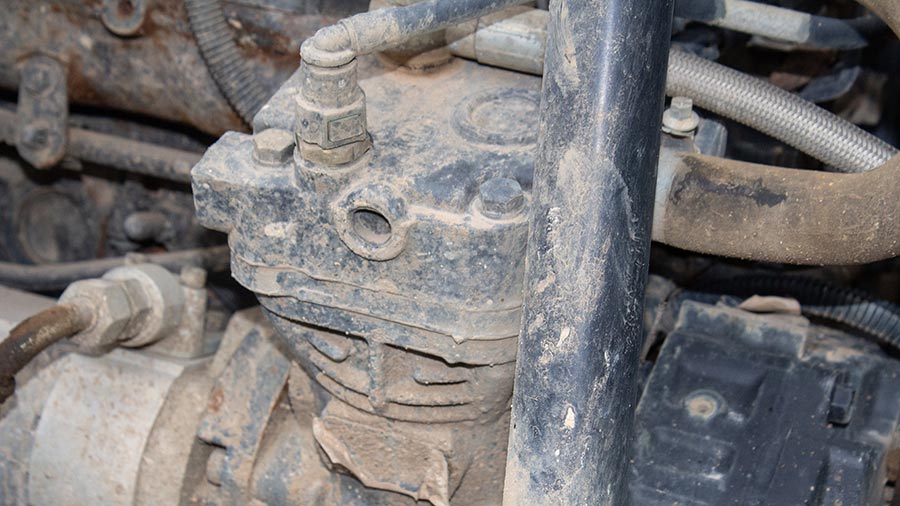
Compressor © James Andrews
Gaskets can fail at the base of the air compressor, which causes an oil leak that gets worse over time. Thankfully, the gaskets are simple to replace and they only cost £10.
Paintwork
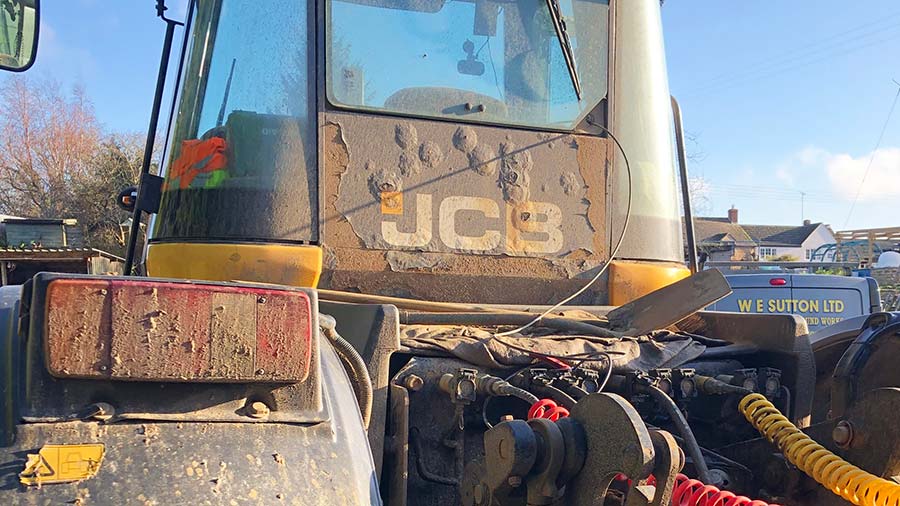
Paintwork © James Andrews
The black paintwork is notoriously poor quality on Fastracs from this era and it’s wise to touch up areas of flaky paint before the corrosion sets in.
Common trouble spots include the framework around the lower cab window sections, the rear cab panel and the bottom of the cab door frame.
Some tractors will have had large sections of the black paint rubbed back and repainted to nip the problem in the bud.
Cab glass
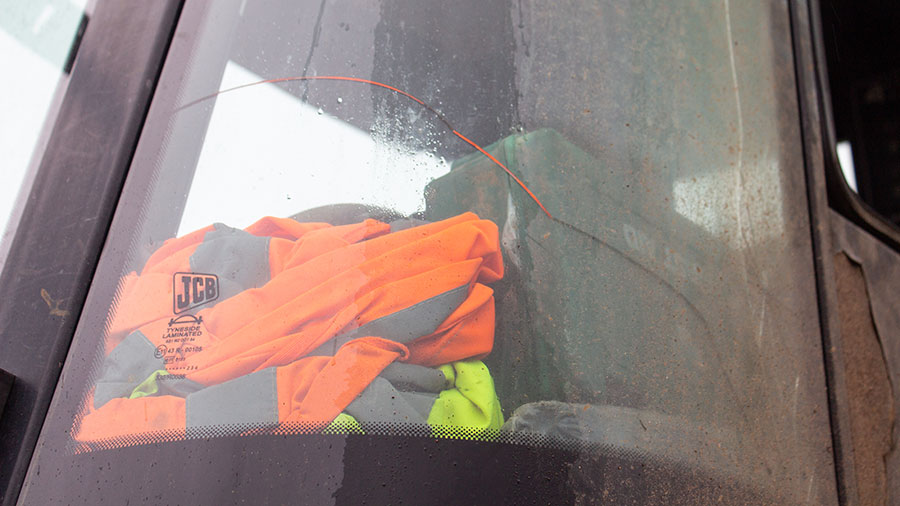
Cab glass © James Andrews
The rear corner glass is susceptible to cracking if knocked, particularly the section behind the passenger seat. It’s usually the first one to go as items get wedged behind the seat and put pressure on the pane.
Replacements are readily available and, at £161, they’re not that expensive for a custom piece of curved glass.
Spool valves
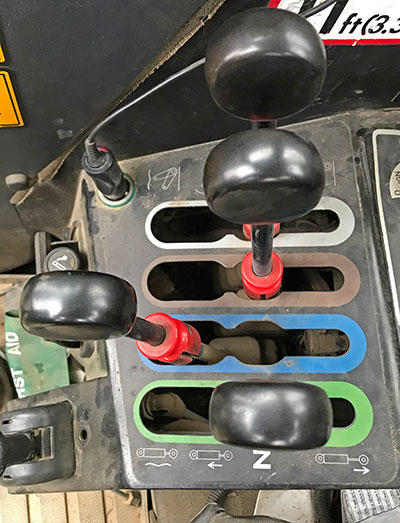
Spool valves © James Andrews
The 2155 and 2155 were available with manual or electric spools and the latter are known to be unreliable.
It’s generally uneconomical to fix a troublesome electric spool system, so many tractors will have been converted to manual spools. Kits are available to modify any tractors still on the fly-by-wire setup.
Manual spools give little in the way of trouble, but the cables can work loose over time, which causes an irritating rattle during driving. The fix is cheap, but awkward – it involves removing the rear tray or spider frame and grovelling under the cab to tighten the adjusters.
Rear linkage and pick-up hitch
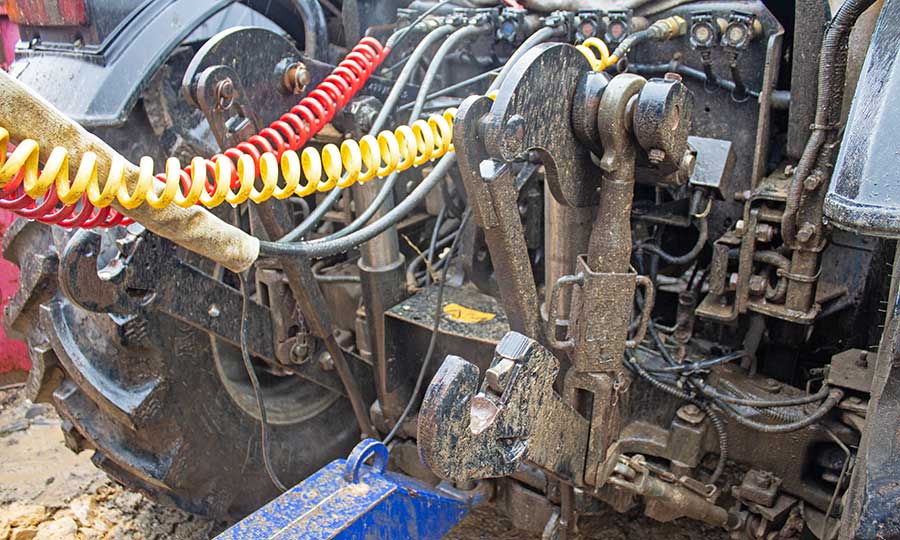
Linkage © James Andrews
The rear linkage with Dromone pick-up hitch is a simple arrangement and fairly reliable, with proven Bosch electronics in the cab.
However, if a tractor spends a lot of its time with a demount spraying on the back, the linkage pins can seize solid. To the uninitiated, it can seem like the controls have failed, but it’s nearly always corrosion that’s to blame.
Removing, cleaning and greasing the pins should rectify the problem.
Hubs
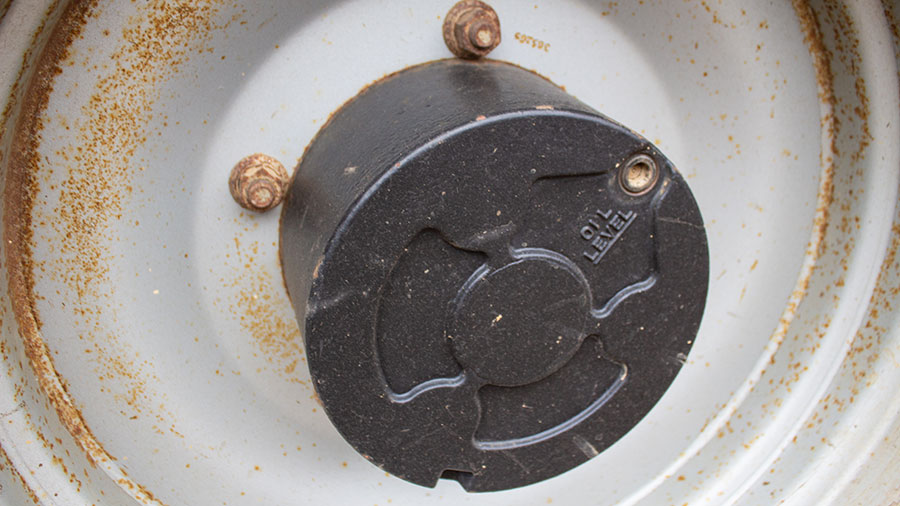
Hub © James Andrews
Hubs contain a relatively small amount of oil and it’s important that this is changed every 500 hours. Neglect will cause leaks over time and eventual failure.
Oil level and condition can be checked by removing the bungs. It’s also a good idea to look for signs of swarf.
2000 series price guide
Prices vary dramatically according to hours and condition, with rougher examples available for about £25,000 and tidy, high-spec tractors going for more than £50,000. Model number doesn’t have a significant bearing on the price.

